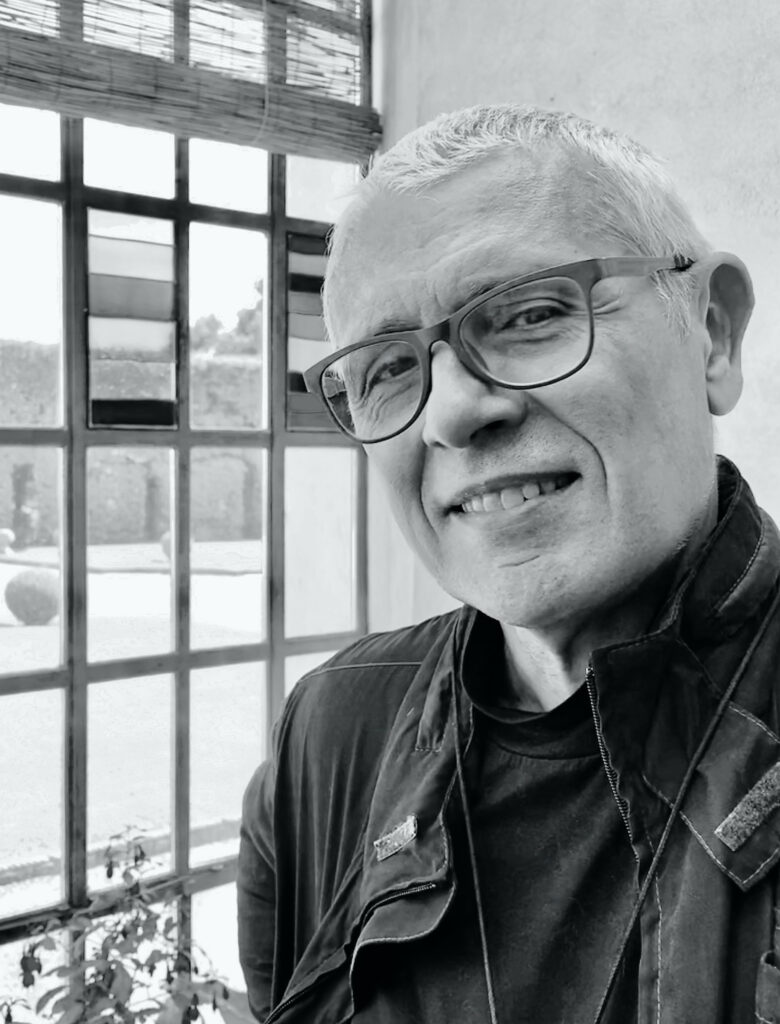Born in 1954, died in 2021 on Lago Maggiore to a French father and Italian mother, after frequenting the anthropological theatre of Comuna Baires and the different experiences of the cultural scene of the time, Barotte delves into the world of research theatre, which leads him to experience as an actor directed by the director and painter Tadeusz Kantor. At the same time he worked with the company Milanese company Teatro AlKaest. At the end of the 1980s, with the ten-year experience of experimentation with the great director, the need arose in Barotte to develop a own language. His visual research began during theatre tours, realising his his first drawings in hotel rooms around the world.
To give form to his thoughts, the artist then embarked on a new path, realises that theatrical practice no longer corresponds to his needs and ends his life as an actor to devote himself entirely to visual investigation, which over the years will lead him to painting. years to painting. Literature and philosophy are the tools that will accompany him on his journey; The links with the literary work of Edmond Jabès, the poetic work of Paul Celan, the spiritual path of San Juan de la Cruz, the philosophical work of Jacques Derrida, inspire the artist in a continuous philosophical-pictorial narrative. His work bears witness to a recourse to a pictorial violence that is almost necessary to express the concept of the sublime.
His work bears witness to a profound reflection, both formal and conceptual, which has matured at the same time as his spiritual journey. step with his spiritual journey; a journey that in the series inspired by the ‘Noche oscura’ of San Juan de la Cruz leads from darkness to light. The velvety blacks make a distant glimmer and reveal an alternative path to darkness, giving shape to that continuous dialogue of existence with finitude.

The artist worked by subtraction, as in the theatre technique he subtracted to make space his works. Perhaps because of his important experience in theatre, he considered his presence too cumbersome for his art. The profound sense of his silences and absences must be seen as a long meditation manifested through his research, the impalpable materials, shapes, signs, blacks from which light and colour emerge. His painting expresses itself like a poem moving between continuous philosophical references.
Jean-Marie Barotte lived intensely the golden age of Milan’s cultural life between the 1970s and 1990s, a period that saw some of the most important artistic movements artistic movements in Milan brought to the world stage; this ferment allowed him to train in a context favourable to international encounters.